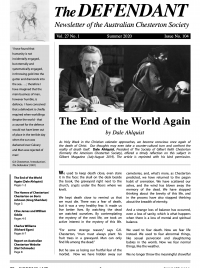Charles Williams (1885- 1945) was a novelist, poet, playwright, literary critic and theologian.
His Outlines of Romantic Theology, written in 1925 but not published until 1990, seeks to develop insights into orthodox Christianity based on a sustained intellectual reflection on the experience of “the sexual love between a man and a woman, freely given, freely accepted, and appearing to its partakers one of the most important experiences in life – a love which demands the attention of the intellect and the spirit for its understanding and its service”.
In a reflection applying the commandment against taking the name of the Lord in vain to how we moderns profane “the name of Love”, Williams cites “the gentleman in Mr Chesterton’s novel” [Turnbull in The Ball and the Cross] who “pronounces the word Love with an indescribable sound of something hard and heavy, as if he were saying ‘boots’”.
Love, says Williams, should only be mentioned when “something of its own eternal sovereignty is felt to exist”. One thinks of the concluding verses of the Song of Songs (in regard to which both Williams and John Paul II sought to restore a focus on its direct relevance to sexual love):
Love is as strong as death, its jealousy unyielding as the grave. It burns like blazing fire, like a mighty flame.
Many waters cannot quench love; rivers cannot sweep it away. If one were to give all the wealth of one’s house for love, it would be utterly scorned.
Manichean view of marriage
Williams notes: “The Church has always, not unnaturally, been haunted by a Manicheanism which, driven out by dogma, has returned as a vaguer but prevailing influence” which has resulted “in an attitude to marriage that seems to regard it, though officially calling it a sacrament, as in effect nothing much more than a matter of morals.”
This brings to mind George Weigel’s comment in his Comedy when Beatrice having biography of St John Paul the Great that the Pope’s Theology of the Body “may prove to be the decisive moment in exorcising the Manichaean demon and its deprecations of human sexuality from Catholic moral theology”.
Manichaeism is a dualistic religion which assigns all the material world, and therefore the body and sex, to the domain of the eternal evil power. While the Catholic Church has always affirmed the essential goodness of matter, and therefore the body and sex, the “Manichaean demon” has led, for example, to the view that even in every act of married love there is cause for shame as it is necessarily accompanied by the “fatal adjunct of unwholesome lust” (St Augustine).
Neither Williams nor John Paul II are naïve about the real struggle between lust and love – not least within the marriage relationship.
Williams observes: “it is few lovers whose intimacy with and contemplation of the beloved are entirely free from ‘covetousness’, and in many it spreads to include all those aspects of her being which were never intended to be theirs”.
The only one of John Paul II’s weekly discourses on the theology of the body that attracted worldwide mainstream media attention was the discourse in which he observed:
“Lust is a reduction of the pyramid of values that the woman should evoke for the man (and the man for the woman). By means of the look of lust a certain woman begins to exist for a certain man not as a subject of call and personal attraction or as a subject of communion, but exclusively as an object for the potential satisfaction of the sexual desire.”
However, both of them declare that overcoming this tendency to lust is “a task that can be carried out and is worthy of man”.
Williams describes Romantic theology as a Christology based on “the identification of love with Jesus Christ, and of marriage with his life”. Romantic love is “assumed into Him with the rest of manhood, though in a particular and more obviously symbolic manner”.
Williams pays homage to Dante as his master and teacher in Romantic Theology. His 1943 work The Figure of Beatrice is a masterpiece of literary criticism.
From his first sight of Beatrice in the streets of Florence when he was nine years old, inspiring a vision of Love as a “Lord of terrible aspect” and initiating him into La Vita Nuova (the New Life); through
his meeting with Beatrice in the Earthly Paradise – “Look, look well; we are, we are indeed Beatrice”; to the consummation of the Divine Comedy when Beatrice having conducted him through the heavenly spheres takes her place once more in the Beatific Rose “at whose heart is ‘the Love that moves the sun and all the stars’”, Dante presents romantic love as the key to not just comprehending but living the Christian faith.
Dante’s vision of the mutual courtesies and exchanges in the Beatific Rose is striving to penetrate the mystery of resurrected, bodily, enfleshed life in the eternity of the Beatific Vision.
Williams’ Romantic Theology, as well as his related insights into “substitution” (bear one another’s burdens and so fulfil the law of Christ) and “co-in-herence”, informs his seven novels.
Each work takes a mysterious phenomenon – for example, the Graal (War in Heaven, 1930); the breakout of Platonic types into this world (Place of the Lion, 1931); the Tarot (The Greater Trumps, 1932) – and reveals that, behind the veil, is that love which became incarnate in Immanuel and is greater than all evil – including sin and death.
